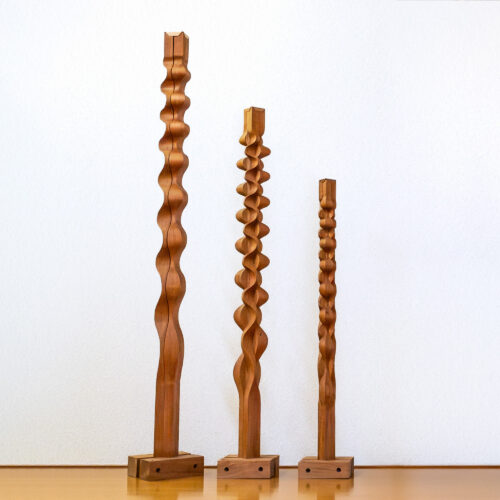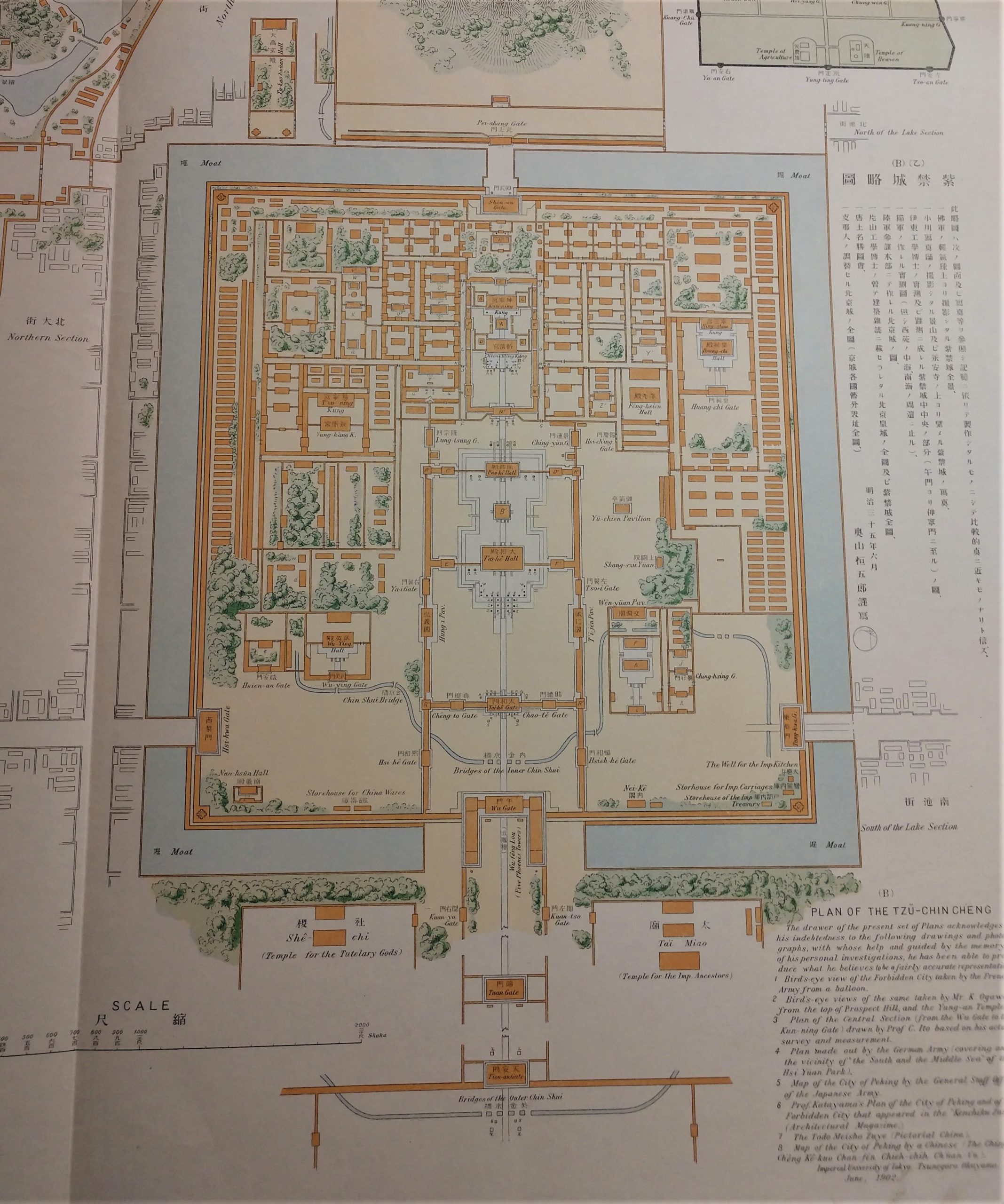In addition to housing the drawings, project files, photographs and other materials that document the architecture of Alden B. Dow, the Archives also contain a number of rare art and architecture books and print collections that were acquired by Mr. Dow over the years. One of the most unusual and beautiful publications is entitled Decoration of the Palace Buildings of Peking, a portfolio of 80 individual plates printed in 1906 in Japan.
Although part of the Archives collection, it is regularly used in conjunction with the International Art unit in the Theory of Knowledge curriculum of the International Baccalaureate program of the Midland Public Schools. Students from Midland High School and Dow High School spend an afternoon in the Home and Studio examining selected plates from this work, as well as illustrations by other artists found in the Archives. Exposure to works of art from a variety of cultures and time periods is one of the key learning objectives of the lesson. And, it’s one of the many ways in which the holdings of the Archives are utilized in support of the educational mission of the Home and Studio.
Accompanying the plates is an explanatory text in two parts, in English and in Japanese. The study was commissioned by the Imperial University of Tokyo during the Boxer Rebellion to investigate and record details of the construction, architecture, and decorative features of buildings within the Forbidden City and Palace grounds. This was an unprecedented accomplishment that unveiled a previously secret and private complex of buildings completely unknown outside of China.
A large variety of decorative features of the palace buildings are illustrated. They range from animal and botanical forms to geometric patterns and various invented designs. The majority of the 80 plates are colored to varying degrees. Twenty plates are hand-colored and mounted on black cards. These include three delightful watercolors showing the Summer Palace and two other buildings in the Forbidden City.
Two map plates show plans of the city of Peking and the Forbidden City on one, with the other showing a park with three lakes. An unnumbered plate gives Japanese architectural terms accompanied by relevant illustrations.
The plates are stored in leather covered boards that form a box, the cover of which is lettered and decorated in gilt. Mr. Dow’s copy is numbered 423 of a limited edition of just 1000 copies.
Decoration of the Palace Buildings of Peking is considered the third of a three-part set that includes Photographs of the Palace Buildings of Peking, which is also housed in the Archives. A description of that two-volume set will appear in a future posting.




















